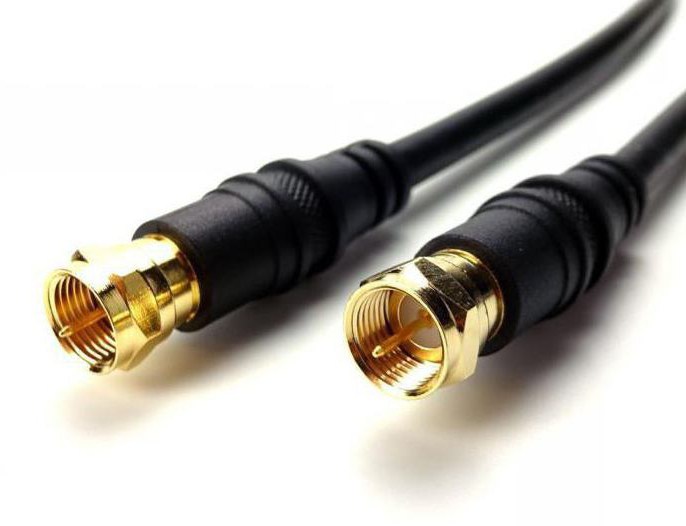RG-6 is a common type of coaxial cable used in residential and commercial buildings. The term RG-6 is general and applies to a number of designs that differ from each other by shielding characteristics, the composition of the center conductor, the type of dielectric and the type of sheath.
Introduction
Initially, the RG format served as an indicator of the designation of a radio frequency cable in an electronic device system. In practice, the term RG-6 is commonly used to refer to coaxial cables with an 18 AWG (1.3 mm) center conductor and a characteristic impedance of 75 ohms.
Coaxial cable has five key components:
Terminology
Coaxial cable is the most common type of wire used as a transmission line that conducts electrical energy or a signal from a transmitter to a receiver. It has a large number of modifications, differing in impedance (complex resistance) and RG type.
RG (Radio Guide) is a generic term that is used to define a wide variety of cable designs. It is usually followed by a number that indicates the wire model code. The RG-6 coaxial cable was originally designed by the military and used exclusively by them. At the moment, this type of cable is no longer used in military radio transmitting equipment, but it has found its application in the domestic and commercial sphere.
The most commonly used cables are RG-6 and RG-59. These two types are commonly used in cable and satellite television and video surveillance applications. Both versions have an impedance of 75 ohms, typical for video and audio equipment.
The difference between RG-6 and RG-59
The RG-59 is a shielded coaxial cable with a diameter of about 6.1 mm with a smaller center conductor than the standard RG-6. Although the RG-59 can be used for cable television (CATV) applications, when working over long distances, there is significant signal loss at higher frequencies.
The RG-59 is commonly used to transmit baseband video in CCTV applications - video surveillance equipment. Suitable for basic analog television antennas in residential premises and for basic CCTV systems on short cable routes. Copper-coated steel has high tensile strength.
Today, the RG-6 is the most commonly used RG type and is used in a variety of devices designed for residential and commercial premises. The RG-6 television cable is typically a double shielded coaxial wire with a diameter of about 6.86 mm. The center conductor is slightly larger than the RG-59. Commonly used for cable and satellite television. Also applicable for cable modems due to low screen attenuation at high frequencies.
Both RG-6 and RG-59 are available in various modifications that are designed for specific applications.
Application
Coaxial cable has a wide bandwidth and is capable of transmitting signals with a frequency from zero to several million hertz. In addition to its importance in the telecommunications industry, all major manufacturers of radios, television equipment, radars, navigation aids and many other types of transmitting equipment, including those used in shipbuilding and aviation, use RG-6 coaxial cable.
Cable television and closed loop systems also use this type of wire. Sophisticated cable television systems use a cable with one or two large-diameter screens.
Work in extreme conditions
The use of coaxial cable is possible in any technique in which signal loss and screen attenuation should be minimized. Or in those devices in which the elimination of external interference is important. Another application is the use of the RG-6 Sat cable in various instrument systems. Combining several coaxial cables under one sheath to form an integrated unit is used in computer technology.
PTFE (polytetrafluoroethylene) insulated high-temperature coaxial cable is used by aircraft and rocket manufacturers, including for use in high temperature and industrial environments where protection from alkalis, acids and other highly corrosive liquids is necessary.
RG-6 cable: specifications
Key technical indicators:
Attenuation is the loss of power or signal expressed in decibels. Typically, the ratio of decibels to distance in meters is measured at a specific frequency. An example is the RG-6, which has a power loss of 5.5 dB / 30 meters at 400 MHz.
Frequency is a term for the number of accesses or cycles in an alternating current (AC) stream in one second. The frequency of the alternating current is 60 hertz. Broadcasting stations operate at frequencies of thousands of cycles per second, and their frequencies are called kilohertz (kHz). High frequencies are millions of cycles per second and are called megahertz (MHz). The TV is broadcast in the MHz band.

Impedance is a concept expressing the ratio of voltage to current in a cable of infinite length. In the case of coaxial cables, this characteristic is measured in Ohms (in fact, this is resistance). Coaxial cables are usually divided into three main classes: 50 ohms, 75 ohms and 95 ohms.
Density (capacitance) is a property of a system of conductors and dielectrics that allows you to maintain electricity when there is a potential difference or voltage between the two conductors. The capacity value is expressed in Farads. The capacitance ranges of coaxial cables are very small and are expressed in picofarads (pF). It is the main factor determining impedance.
The propagation speed - is the ratio of the flow rates of electric current in an insulated cable and light. All insulated cables have this ratio and are expressed as a percentage. In the case of coaxial cables with a polyethylene dielectric, this ratio is in the range of 65-66%.
These are the main characteristics that can be found in the technical documentation for the cable.